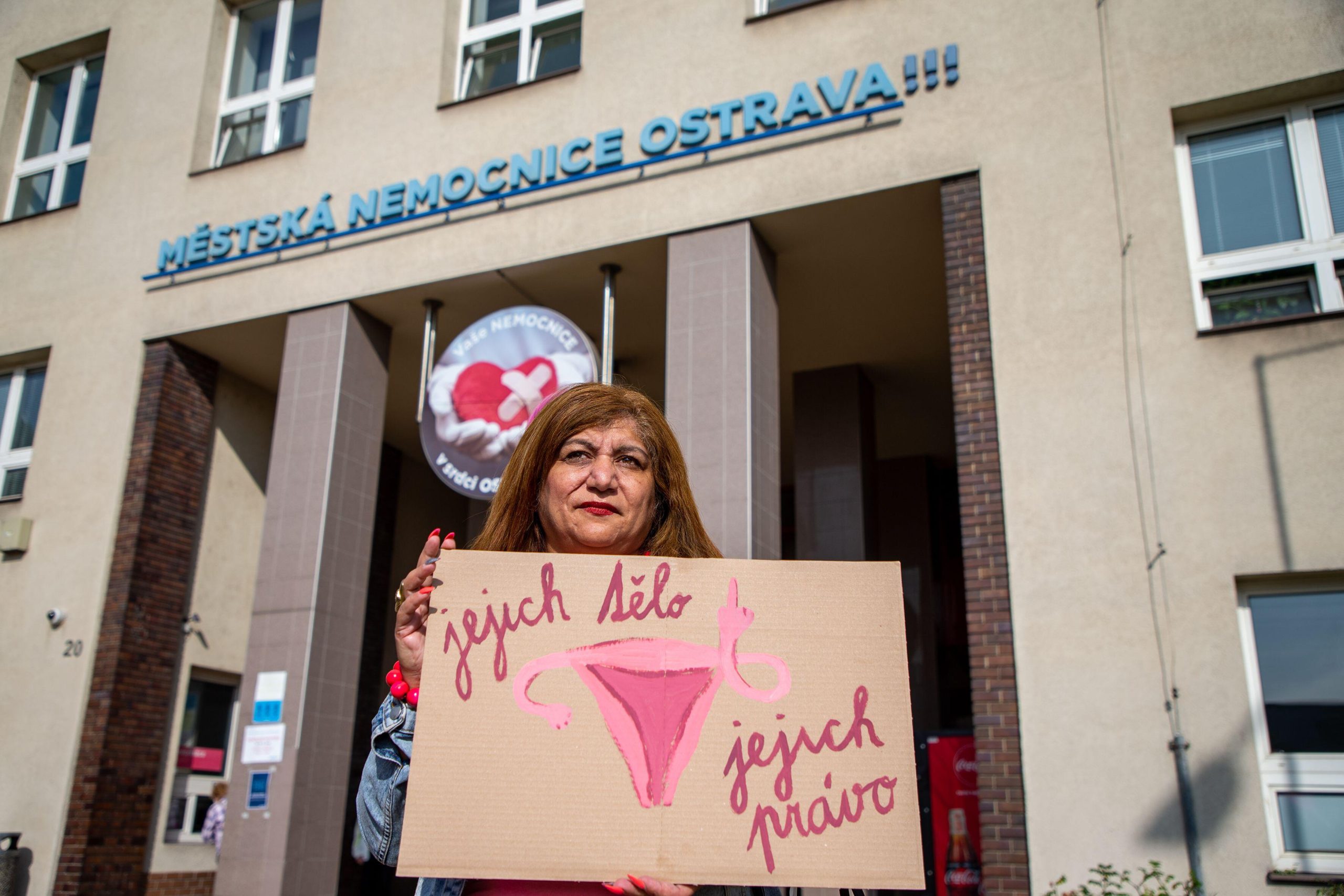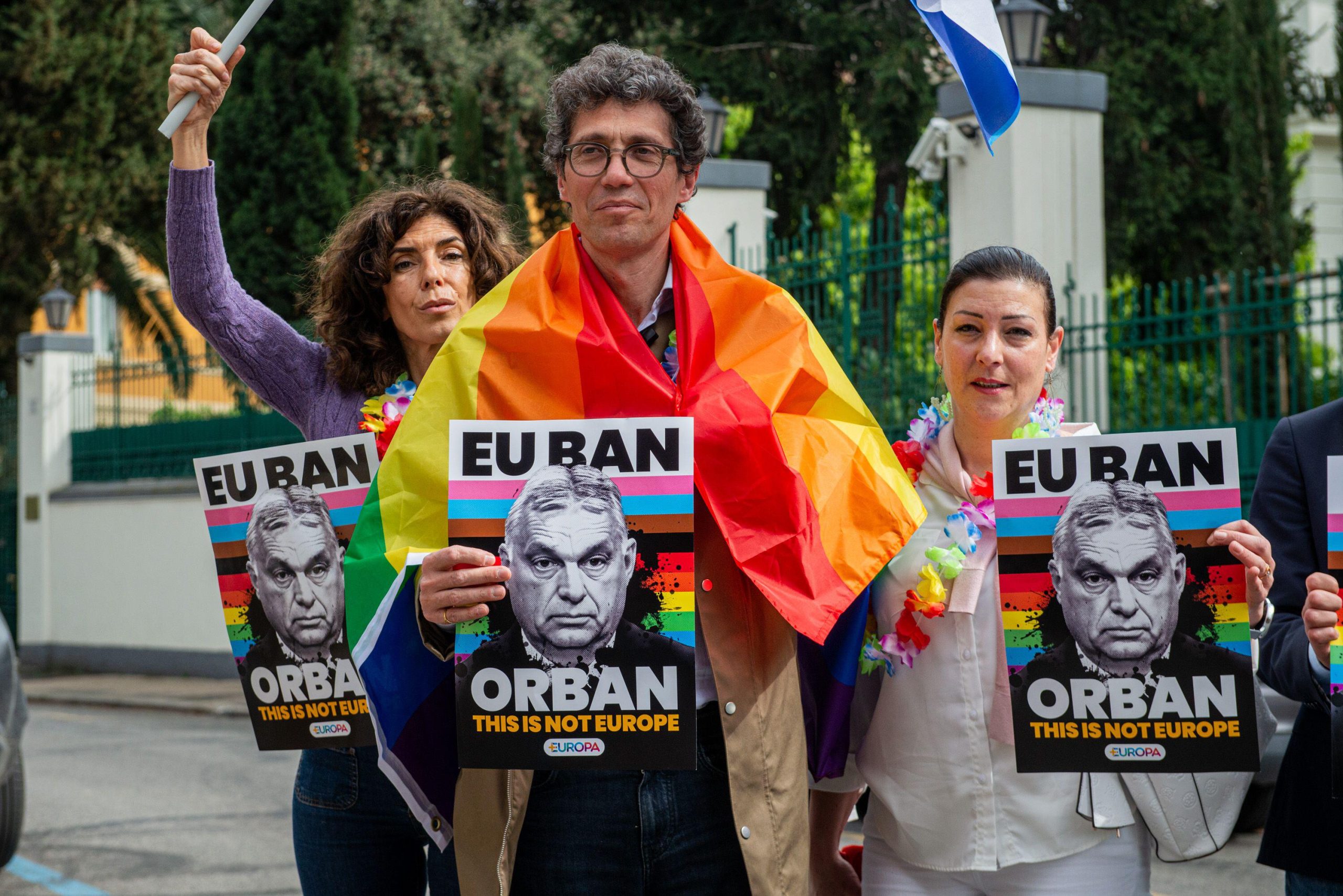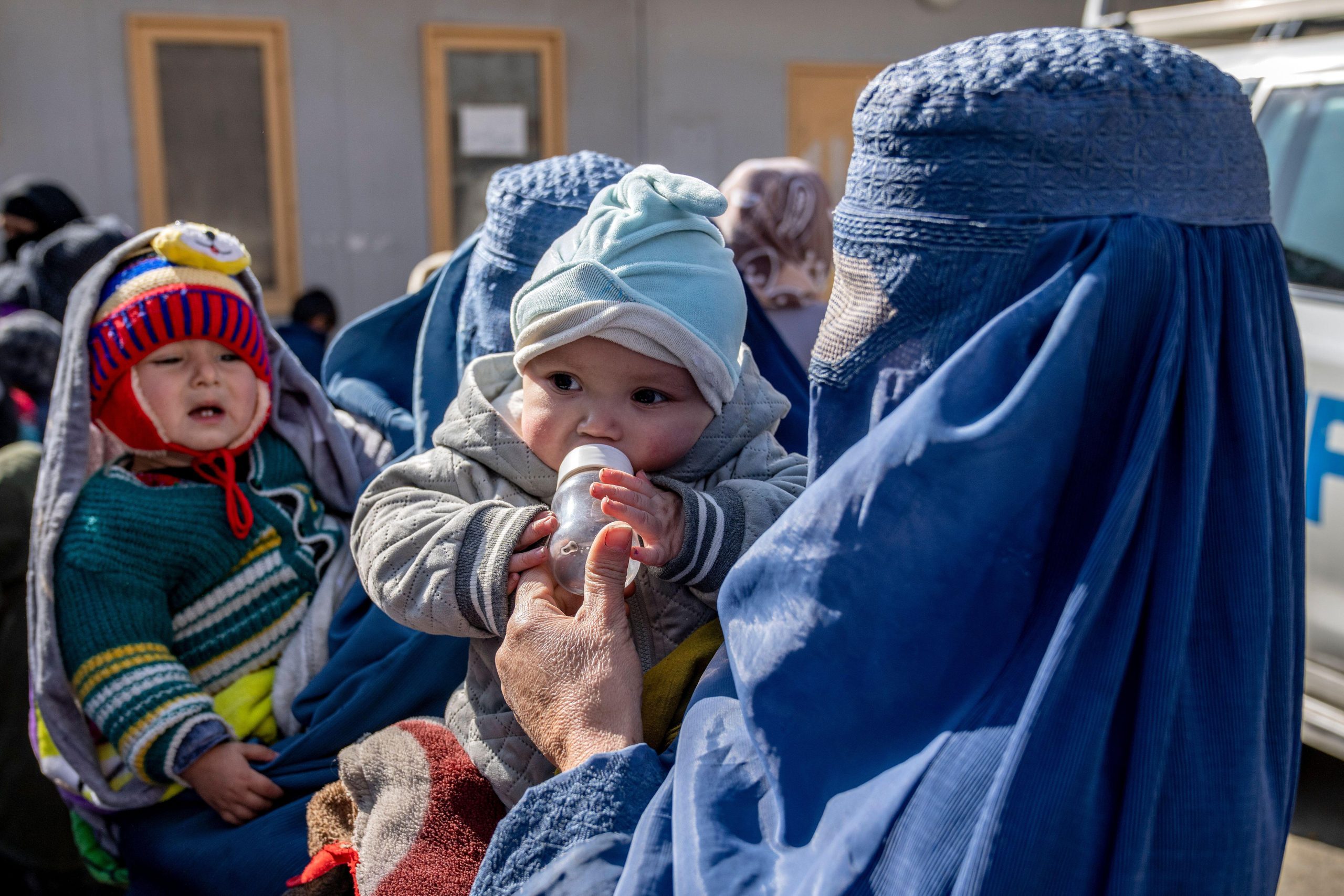This article will appear in Volume 54, Issue 1 of our print edition of Index on Censorship, titled The forgotten patients: Lost voices in the global healthcare system, which will be published in April 2025.
Jana Husárová was in labour with her second child when the doctor presented her with a document. “I didn’t want to sign it,” she said. So she didn’t.
“When I got home, I visited my doctor in Sabinov. He told me that my [fallopian tubes] were tied.”
She went back to the hospital and asked how that could be possible when she had not signed a consent form.
It was 1984, and Husárová was 15 years old. She is one of many Roma women who have undergone forced sterilisation, as she described in a video for the Slovakian Centre for Civil and Human Rights (known as Poradňa).
Since then, she has fought for justice and compensation, and to stop this happening to other women.
In Soviet-era Czechoslovakia, Roma women underwent forced sterilisations, just as they had done under the Nazi regime.
They were offered money by visiting social workers, pressured into agreeing to the procedure and told that their other children would be taken away if they did not comply. Others were made to sign consent forms while in agony during childbirth, often with no idea what they were signing. When a caesarean section was performed, they were sterilised at the same time.
Then came the Velvet Revolution in 1989 – which marked the end of Soviet rule in Czechoslovakia – and, in 1993, the creation of the Czech Republic and Slovakia as sovereign nations.
Sterilisation was no longer state policy, but the doctors who had implemented it were never punished, and racism towards Roma communities continued to thrive.
And for Roma women, the practice was far from over.
In 2003, a grim reality was uncovered in a report by the global human rights organisation Centre for Reproductive Rights and Poradňa. The organisations interviewed about 110 Roma women across eastern Slovakia who had been (or had likely been) sterilised since the fall of communism. They found that doctors and nurses gave women “misleading or threatening information” to “coerce them into providing last-minute authorisations for sterilisations” when they were undergoing caesareans. C-sections were sometimes given unnecessarily, partly as a pretext for sterilisation.
In some cases, women were not told about the procedure until after the event – if ever.
Alongside forced sterilisation, Roma women faced physical and verbal abuse by medical providers. They were segregated in maternity wards and sent to Roma-only rooms. If they complained, they were insulted by doctors and nurses.
During the course of the research, hospital authorities stopped Roma women accessing their own medical records, denying them the opportunity to get to the truth. The government failed to condemn any of these practices or put an end to them. The report writers urged the government to examine the issues and make things right with the survivors.
In 2004, Slovakia adopted new legislation around informed consent, requiring women to wait 30 days before sterilisation could be performed. It also gave more protection to patients seeking access to their medical records.
Soon after the report was published, lawyer Vanda Durbáková started working with Poradňa on a plan to bring some of the cases to court while urging the government to introduce a compensation scheme.
At the time, Slovakia was scheduled to become a member of the European Union (EU), and all eyes were on the state of human rights in the country. The reaction to the report from the state was not welcoming, and it initiated criminal proceedings against the report’s authors.
But a group of Roma women felt empowered to take their stories to Parliament.
“They not only submitted their cases in the courts but were also really active, communicating with the media and starting as a group to fight for justice,” Durbáková said.
With little luck in the Slovakian courts, they took their cases to the European Court of Human Rights (ECtHR) in Strasbourg.
Between 2011 and 2013, the ECtHR made rulings in three cases, finding that Roma women who had been forcibly sterilised had had their rights violated. The women were granted financial compensation, and the Slovak courts began to make their own rulings in favour of other women, but it was a slow process.
“The women were not really encouraged to take their cases to the courts, because the [Roma] community was afraid of any victimisation,” Durbáková said, explaining that they were worried that suing hospitals would lead to further discrimination.
But the women who spoke up told her they believed their actions eventually led to them, and their daughters, getting better treatment.
Roma activist Veronika Cibriková, who was forcibly sterilised in 2000 during a caesarean section, told Poradňa: “I don’t want other women – and my daughter, who is now pregnant – to end up like I did. We fight for each and every woman so that they do not suffer as we have suffered.” She eventually got justice at the ECtHR.
Following a call for an inquiry by the UN Human Rights Committee, the Slovak government finally apologised in 2021. It promised to pass legislation to allow for financial compensation, but this has not yet come to fruition.
In 2017, CRR and Poradňa published another damning report, documenting Roma women’s experiences of reproductive healthcare in Slovakia. Women reported abuse, discrimination and physical restraint in childbirth. Almost all the women interviewed reported being segregated in maternity units – something the Commissioner for Human Rights condemned during a visit in February 2025.
One woman, Viola, said: “When I was giving birth…they were yelling at women during childbirth… They tied some women’s legs or jumped on their bellies. One woman [jumped on my belly] with all her weight, pressed it and yelled, ‘Push, push! You were fucking and so now you have to deliver’.”
Durbáková said that sometimes Roma-only rooms were so overcrowded that the women had to share beds. Poradňa is now litigating a case against one state-run hospital.
The fight for Roma women has roots that go back decades. The first documentation came in 1978 through the campaigning organisation Charter 77, with signatories including dissident writer (and, later, Czech president) Václav Havel.
It outlined how Roma women were not truly consenting to sterilisation, saying: “Czechoslovak institutions will soon have to answer charges that they are committing genocide.”
The Czech Republic is facing this ugly truth, too.
“During the 1990s, we began to hear stories of [Roma] women claiming that they were still being forcibly sterilised,” said Gwendolyn Albert, a human rights activist and journalist from the USA who now lives in the Czech Republic. Albert has campaigned for Roma women who have allegedly been sterilised as recently as 2017.
The woman she’s worked with the longest is Elena Gorolová, who became the face of the movement to seek justice in the Czech Republic.
Many Roma women felt ashamed that the decision to choose to have a family had been taken away from them, said Albert: “[These women] went to the hospital fully believing that the doctors had their best interests at heart and were going to do what was best for their health and what was best for their children. And instead, they’ve been tricked into becoming infertile, and so they feel stupid.”
Kumar Vishwanathan is the director of Life Together, an NGO working with Roma communities in Ostrava in the Czech Republic. When he found out that he knew many of the women impacted, he brought them together in his office. At first they were tentative to talk but they soon started opening up.
“They were suppressing it within themselves all their lives,” he said, adding that some women had faced physical abuse at home after it transpired they could no longer have children. “So that is a taboo which was broken around that table in 2003.”
In 2005, the Czech ombudsman published a report showing that there was significant reason to believe that forced sterilisations had continued until at least 2001.
Vishwanathan said that while there was a lot of support for the women during debates in Parliament’s Lower House, the problem came in the Upper House.
“A lot of them were doctors, former doctors, who felt threatened that if they agreed to the fact that these women were forcibly sterilised and have to be compensated… they will be challenged as people who violated the law,” he said.
The Czech government apologised in 2009, becoming the first in the region to do so. In 2021, Gorolová and others won the fight for women to receive compensation, although the government set a time limit for making a claim. Women had until the end of 2024 to apply, and they had to prove that they had been forcibly sterilised, even though many medical records had allegedly been destroyed or falsified.
The government is now debating a two-year extension of the process, and there are calls to remove the “burden of proof” from the victims and place it on the state instead. However, many women had already been rejected under the earlier rules, had not applied in the first place, or died before they had the chance to seek compensation.
There is likely more yet to be uncovered. Vishwanathan said that many Roma people have told him they still face segregation in Czech hospitals.
The issues in reproductive care for Roma women are not unique to the Czech Republic and Slovakia. Ana Rozanova from the ERGO Network, a group of pro-Roma NGOs across Europe, told Index that women in these two countries have simply been more vocal.
This is just a snapshot into the wider discrimination faced by Roma women across Europe, based on both ethnicity and gender.
It is the women who have put an end to forced sterilisation in the Czech Republic and Slovakia by fighting for justice – but there is further to go. The rest must now come to light and be eradicated.






